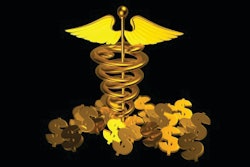
Like death, taxes, and the Rolling Stones going on tour again, at least one other thing is certain in 2013 – workers’ compensation insurance costs will increase for employers. You can expect your workers’ comp premium to rise simply because insurance companies have paid out more in claims than they have collected in premiums. To get the best deal, you must make yourself attractive to your insurance company before it starts setting rates. That way, you are in control of your insurance rates rather than the insurance company.
When setting rates, insurance companies look at the amount of risk that is inherent in your operations and the actions you have taken (and continue to take) to manage and control these risks. To make yourself attractive to your carrier, ask yourself these questions:
- Do you hire good employees who are focused on job safety?
- Do you have a safety program and continuously communicate with employees regarding job safety?
- Do you properly classify your employees?
- Do you have a strong return-to-work program?
The insurance company's role
Risk mitigation is a two-way street – your insurance company and agent should do their part, too. Insurance companies typically perform site inspections and offer safety recommendations. Some you may think reasonable, and some you may not. Your insurance company may insist that you implement all of its recommendations, or it may agree with you that some do not have to be implemented.
Just because the carrier agrees with you that some of its recommendations don’t necessarily have to be implemented doesn't mean you are off the hook. If it keeps you as a customer, will the carrier increase your premium for not agreeing to implement all of its recommendations?
Your agent may also sit on your safety committee and offer general advice using studies on areas such as ergonomics. He or she may suggest videotaping employees at their jobs for the purpose of identifying any safety problems and analyzing how they can boost their work performance.
Your insurance company should keep you informed as to how much specific injuries will cost you, as this cost often has a ripple effect. When an employee is hurt on the job, the primary cost is his or her medical bills, but there are also ancillary costs. Another employee must leave work to transport the injured person to the emergency room and wait there for him or her. And if the injured person is unable to return to work for a period of time, you must find and train someone else to perform his or her job. All this effort equals lost production.
Six Actions Employers Can Take to Control Runaway Workers' Compensation Medical Costs
Experience modification factor
Understanding the experience modification factor is also critical, especially since 2013 will mark the first major change in the rating bureau’s method of determining your experience modification factor. This change will further incentivize you to improve your loss experience since the premium differences between those employers with good loss experiences and those with bad loss experiences will become even more drastic. The biggest impact on pricing will be for those employers with high-frequency, low-severity workers’ comp claims.
The Relationship Between Construction Safety and Experience Modification Rate
A company with a 1.0 experience modification factor is simply average; you need to set a loftier goal for yourself. Although one large incident may cause your experience mod to rise, a frequency of lesser injuries - though deemed to be smaller individual expenses - will generate a higher experience mod and higher costs as you get penalized more for frequency.
Incidents which are not your fault can still cost many dollars and your experience mod to rise. When this occurs, your insurance company works to collect the money they spent on your behalf. This is difficult and takes a great deal of time to collect from the party that caused the incident.
Implement safety, control costs
You can control a certain level of your workers’ compensation costs in 2013 by implementing an active and caring safety committee with tunnel vision on job safety. Also, know and understand the effect of injuries on the experience modification factor and how they can affect your bottom-line.
You should do your part to mitigate risk, and also expect a certain level of commitment from your insurance company and agent. I advocate an annual training day and a safety orientation kickoff. When employees see that their employer is committed to their safety, this sense of commitment tends to trickle down to them – to everyone’s benefit. You pay lower premiums, and they are safer on the job.
Andy Knox is Vice President of Watson & Knox, Inc. in Thomson, Georgia, where he focuses on Property and Casualty lines with an emphasis on Safety (OSHA) and Workers Compensation. He is one of 60 agents in the country who have obtained the Masters Workers’ Compensation Advisor designation from the Institute of WorkComp Professionals. He can be reached at [email protected].



















